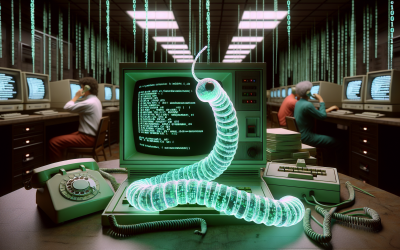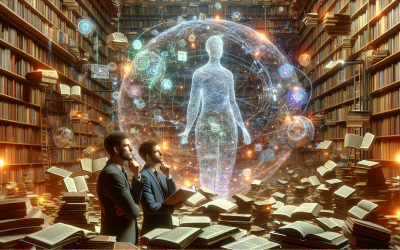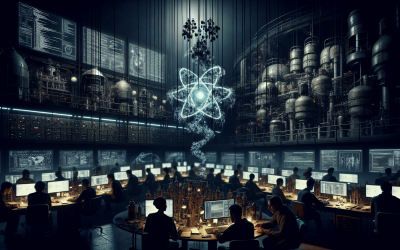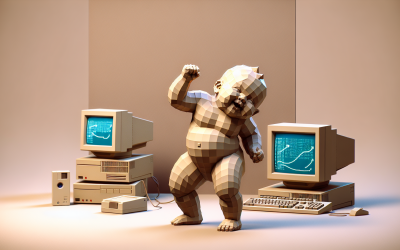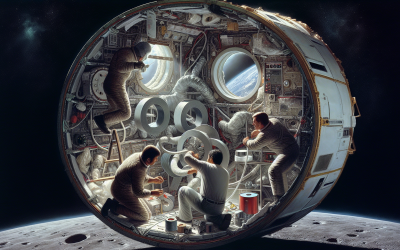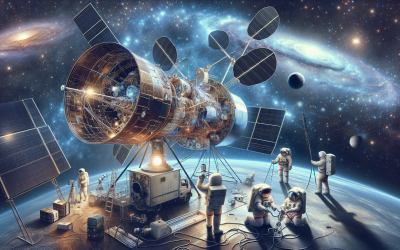Blog
The Accidental Internet Catastrophe: How the Morris Worm Changed Cybersecurity Forever
On November 2, 1988, the early internet faced its first major crisis when the Morris Worm rapidly spread across thousands of computers, slowing systems and causing widespread disruption. Created by a curious graduate student with no malicious intent, this self-replicating worm exposed the vulnerabilities of a trusting, interconnected digital world. The incident led to the birth of digital security practices we still rely on today. Explore how a single programming mistake transformed internet safety forever—and why those early lessons remain crucial in our connected world.
How Google’s Search Algorithm Transformed the Internet and Shapes What We Know
Discover how two Stanford students transformed the chaotic early web into an organized, searchable space with Google’s revolutionary algorithm. Explore how this powerful invisible librarian changed how we access information, its incredible benefits, and the hidden biases and feedback loops that shape the information we see every day. Step inside the story of search algorithms as society’s new gatekeepers and think about what they mean for our understanding of truth in the digital age.
Stuxnet: The Cyberweapon That Took Down Nuclear Centrifuges and Changed Digital Warfare Forever
In 2010, security researchers uncovered Stuxnet — the world’s first cyberweapon designed to sabotage physical industrial equipment. Unlike typical viruses that steal data or cause surface-level disruption, Stuxnet targeted Iran’s nuclear enrichment facilities by manipulating programmable logic controllers to cause real-world damage. This sophisticated worm blurred the line between digital threats and physical destruction, raising profound ethical questions about cyber warfare, technology’s double-edged nature, and our responsibility as creators of tomorrow’s tech. Stuxnet’s story is a powerful lesson for all digital citizens about the critical importance of cybersecurity, ethical innovation, and the real-world impact of the code we write.
The Dancing Baby: How the Internet’s First Viral Meme Taught Us to Think Like Coders and Creators
Discover the story behind the Dancing Baby, the internet’s very first viral meme from the 1990s that changed how we share and create digital culture. This quirky, looping 3D animation wasn’t just a viral sensation—it revealed key lessons about computational thinking, modular creativity, and the remix revolution. Learn how this early digital icon helped shape our modern language of GIFs, demonstrated the power of collaborative media, and showed us how ideas truly spread in connected digital networks. Explore how something as simple as a dancing baby became a lasting symbol of culture that thinks like code.
How Apollo 13’s Creative Crisis-Keeping Shows Us the Power of the MacGyver Mindset in Coding and Problem-Solving
When Apollo 13 suffered a life-threatening explosion miles from Earth, the crew and ground team faced a seemingly impossible mission: keep three astronauts alive with limited resources. Their secret? Creative problem-solving and the “MacGyver mindset”—turning everyday materials into lifesaving solutions. This blog post explores how this approach parallels great programming and engineering: when plans fail, innovation and resourcefulness take center stage. Learn how to channel that same spirit in your own projects by embracing constraints, thinking creatively, and turning failures into stepping stones for success.
How the Hubble Space Telescope’s Flaw Teaches Us to Think Like Coders: Turning Bugs into Breakthroughs
Discover how the Hubble Space Telescope’s initial blurry images reveal a powerful lesson for coders: mistakes aren’t failures but opportunities to learn, adapt, and innovate. From NASA’s ingenious “contact lenses” fix in space to the art of debugging your own code, this story shows how persistence, creativity, and problem-solving skills turn setbacks into breakthroughs. Learn to embrace bugs as stepping stones toward better, smarter solutions — just like the billion-dollar telescope that changed our view of the universe forever.

